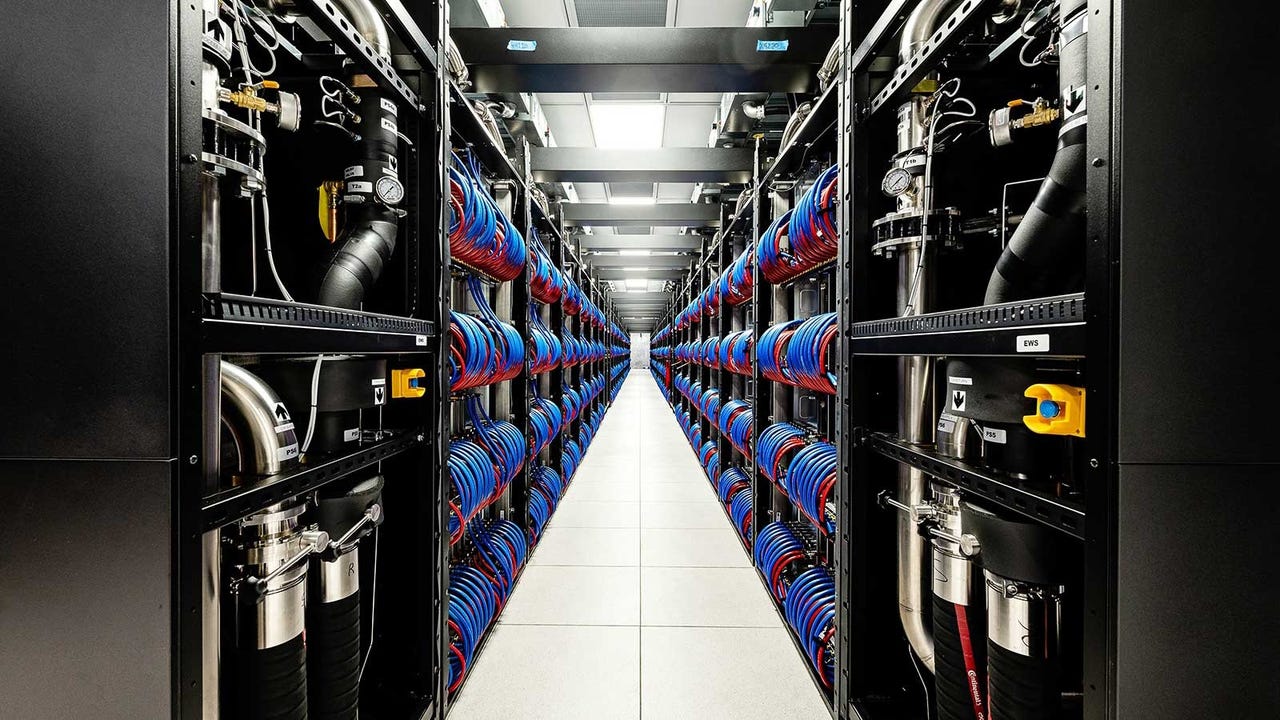
































The Aurora supercomputer is slated to come online in 2023.
Image: Argonne National LaboratoryOn Wednesday, Intel officially introduced the Intel Max Series product family for high-performance computing (HPC) and artificial intelligence (AI). Comprising the Intel Xeon CPU Max Series (code-named Sapphire Rapids HBM) and the Data Center GPU Max Series (code-named Ponte Vecchio), the new products will power the upcoming Aurora supercomputer at Argonne National Laboratory.
When the Aurora supercomputer comes online in 2023, it's expected to be the first supercomputer to exceed two exaflops of peak double-precision compute performance. It will also be the first system to showcase the power of pairing Max Series GPUs and CPUs together -- the supercomputer will house more than 10,000 blades, each containing six Max Series GPUs and two Xeon Max CPUs.
While the Max Series will make a splashy debut at Argonne, the product family is really designed to bring HPC and AI to a broader market, Intel said.
"We're trying to help solve the world's biggest challenges faster and do that in a sustainable way," Jeff McVeigh, Intel's corporate VP and GM of the Super Compute Group, said to reporters ahead of the announcement.
Also:Google makes massive commitment to support more languages using AI
Problems like climate change and global health crises can be addressed more quickly with the help of HPC and AI, he noted. There's a "wide diversity" of workloads in the HPC and AI domain, he added. Some are heavily compute-bound, while others have high constraints on memory bandwidth.
"Our view is, all these are important, and we need to have the right solutions to address them," he said.
The CPUs and GPUs are united by oneAPI, Intel's open, standards-based, cross-architecture programming framework. Researchers and businesses will solve problems faster and more sustainably using Max Series products.
Here's more on the Xeon Max CPU, the first and only x86-based processor with high bandwidth memory:
The Max Series GPU, meanwhile, is Intel's highest density processor, with more than 100 billion transistors in a 47-tile package:
Also: 8 ways to reduce AI burnout
In addition to powering the upcoming Aurora supercomputer, Intel will deliver Xeon Max CPUs to Los Alamos National Laboratory, Kyoto University, and other supercomputing sites.
Meanwhile, Argonne and Intel unveiled Sunspot, Aurora's Test Development System, consisting of 128 production blades. Researchers from the Aurora Early Science Program will have access to the system beginning in late 2022.
 Tags chauds:
technologie
informatique
Tags chauds:
technologie
informatique